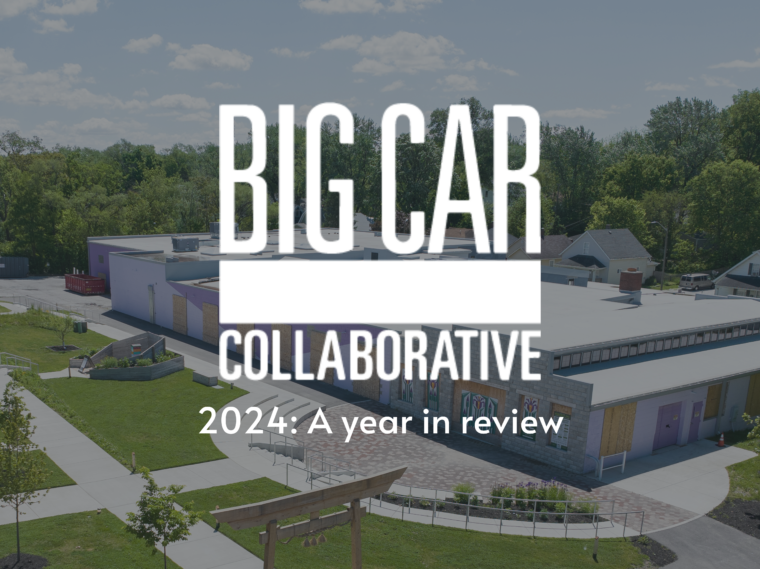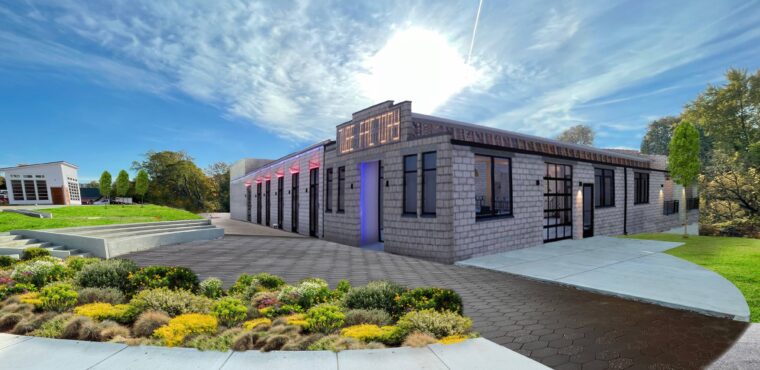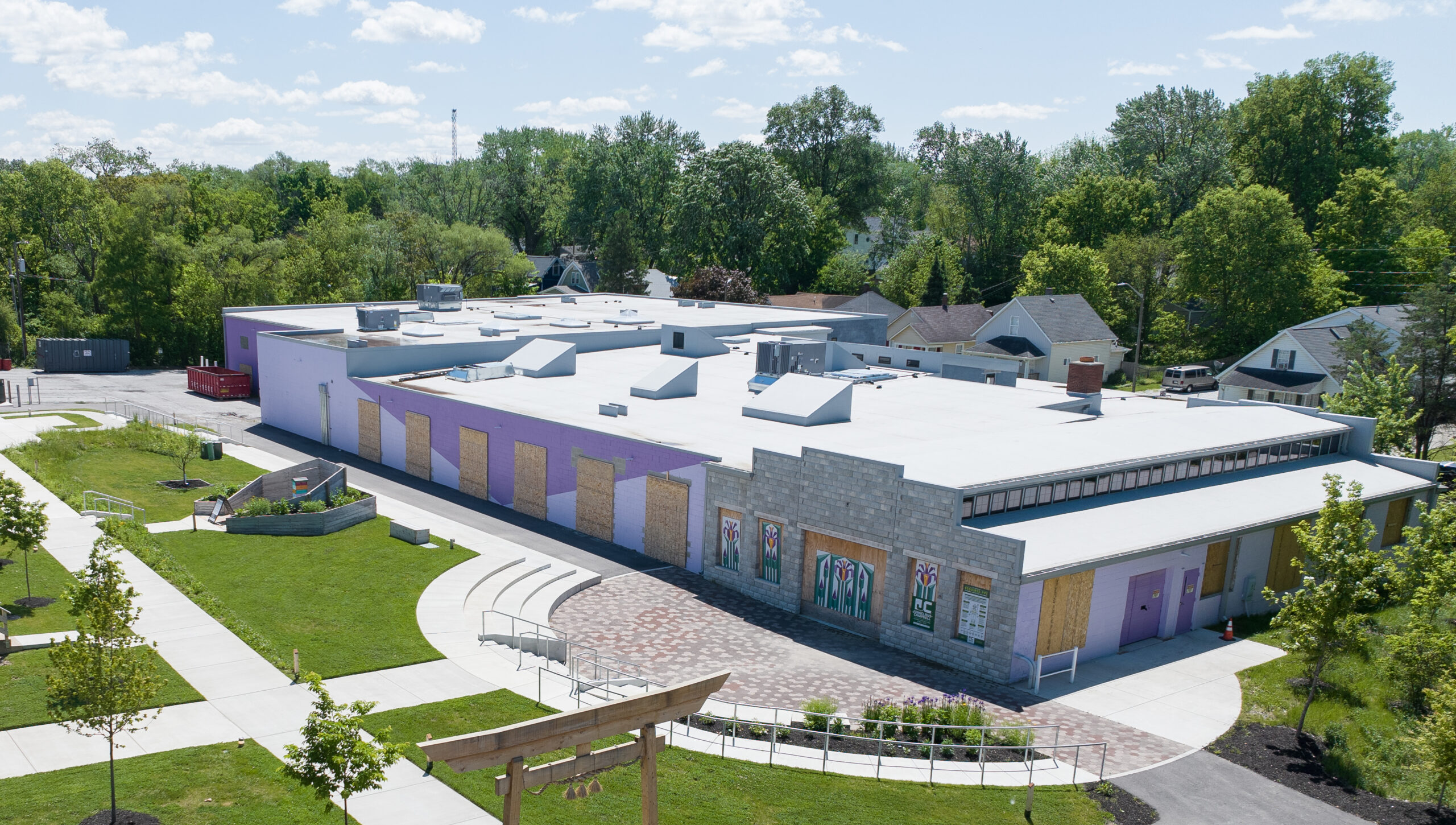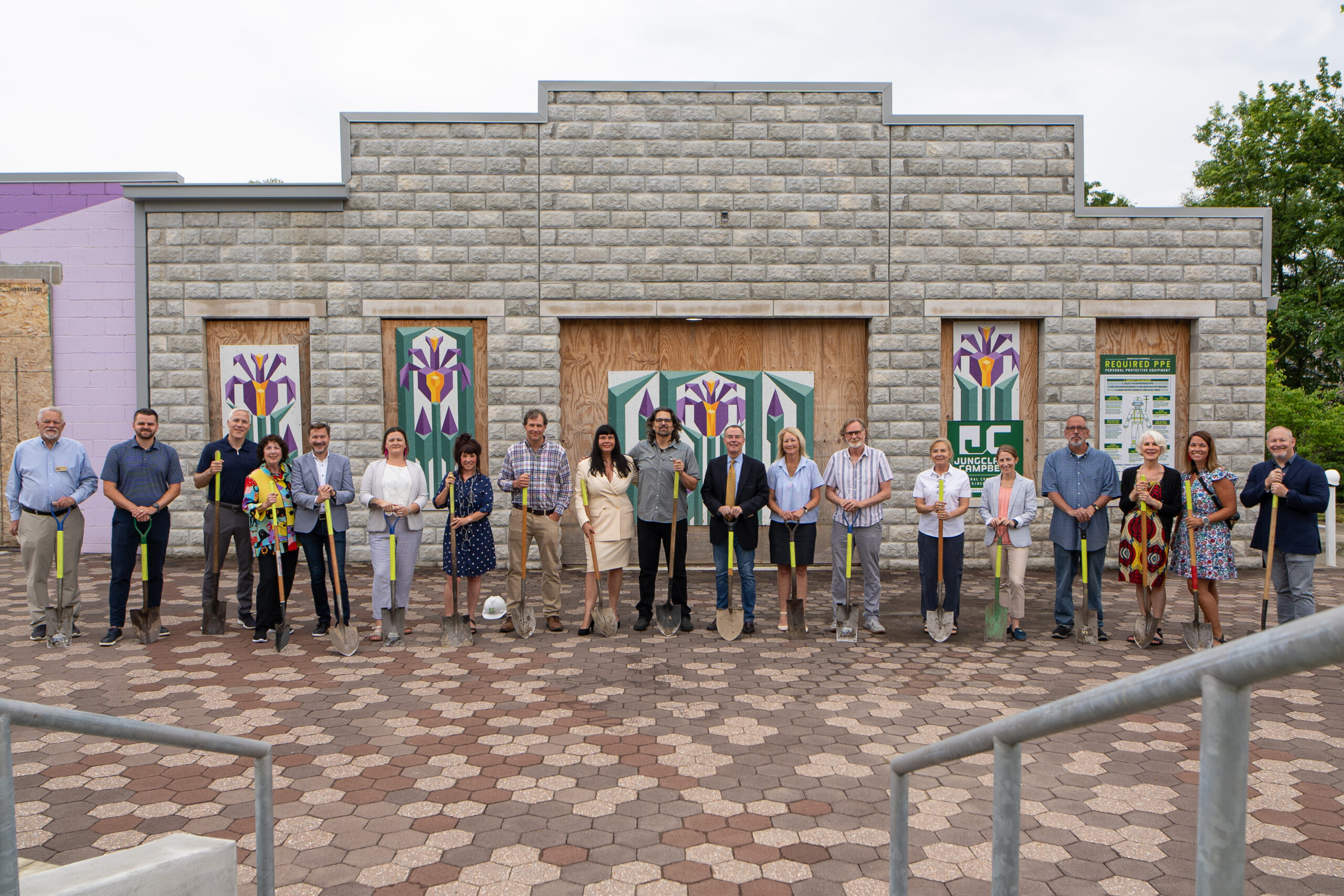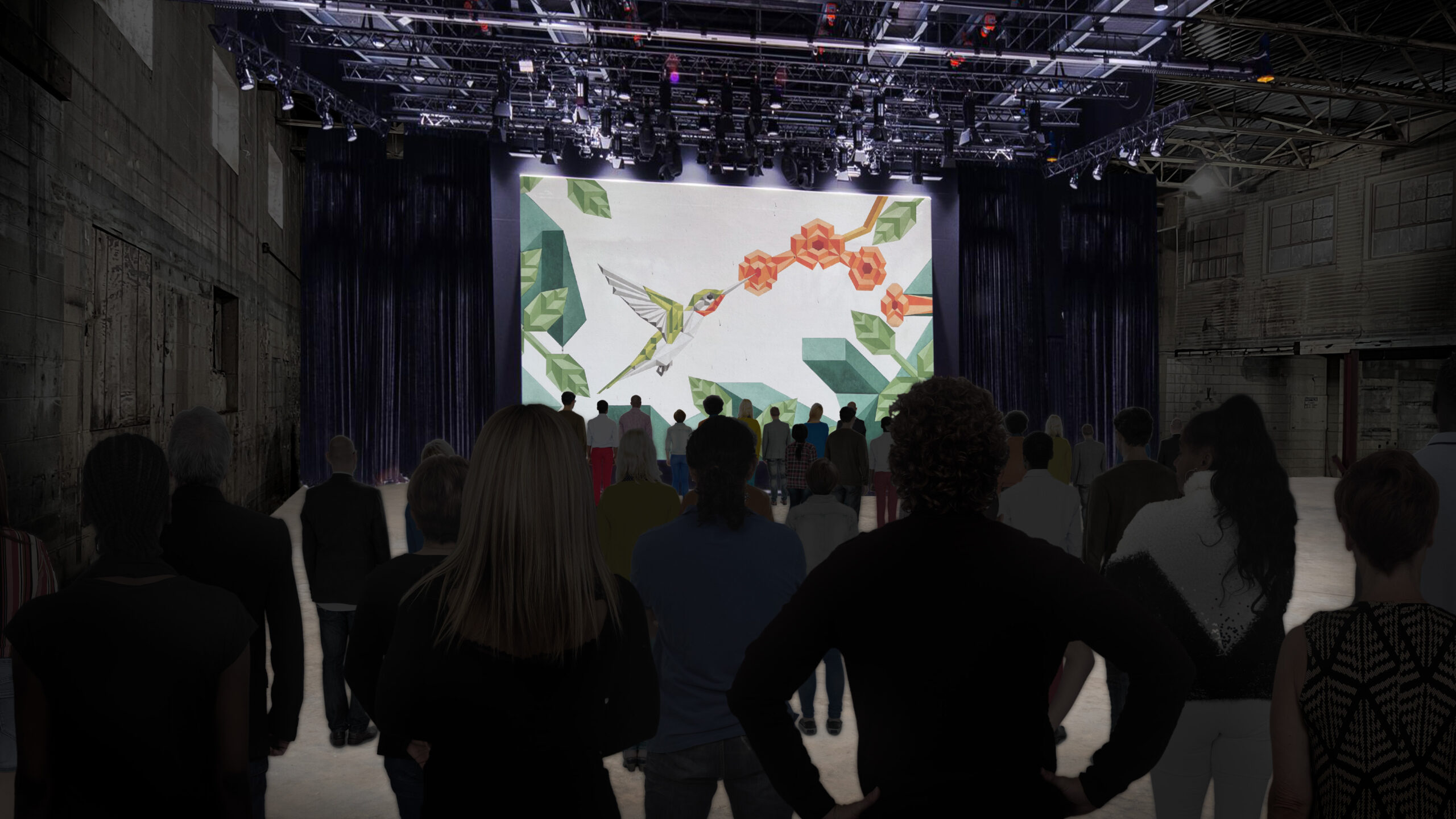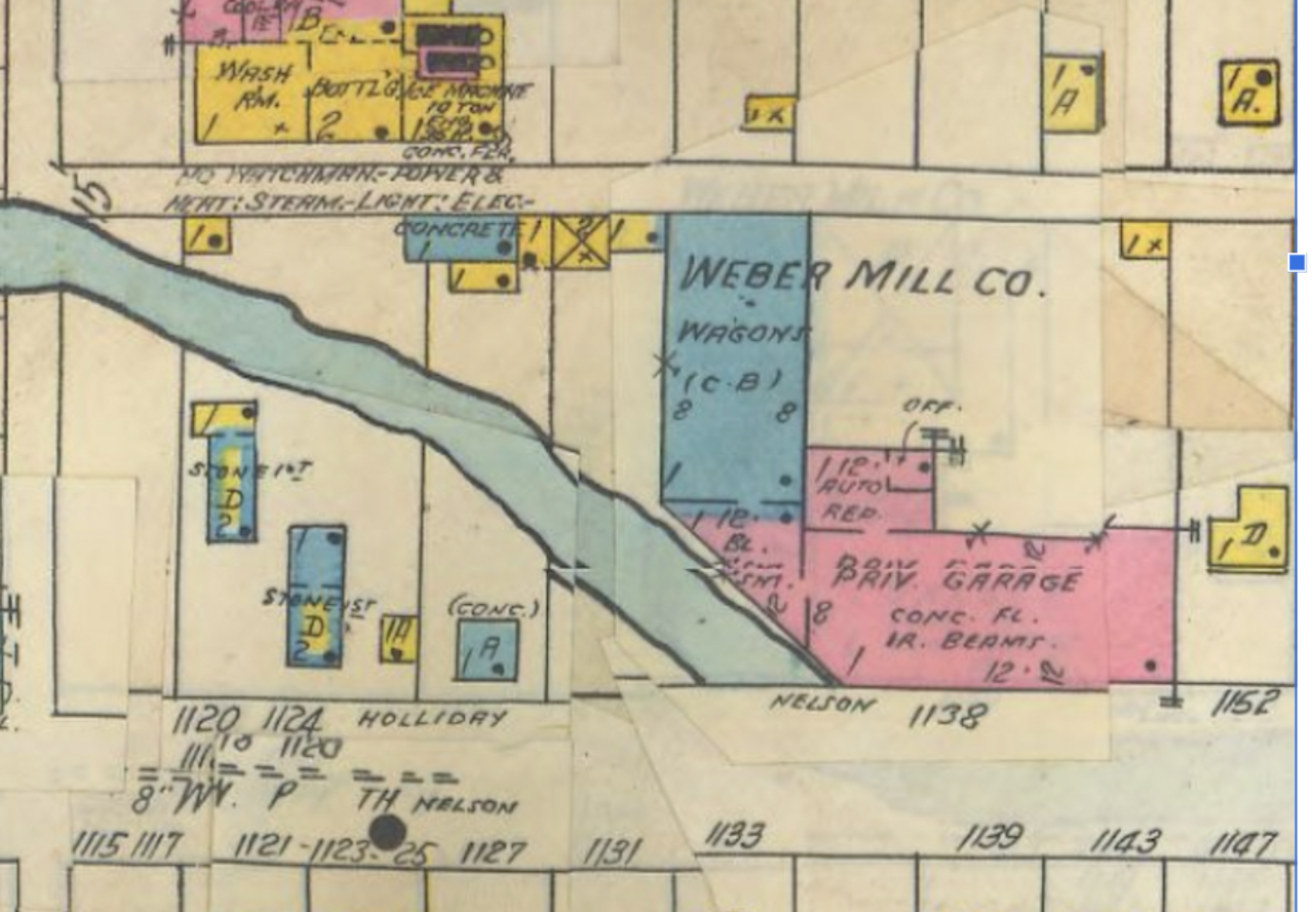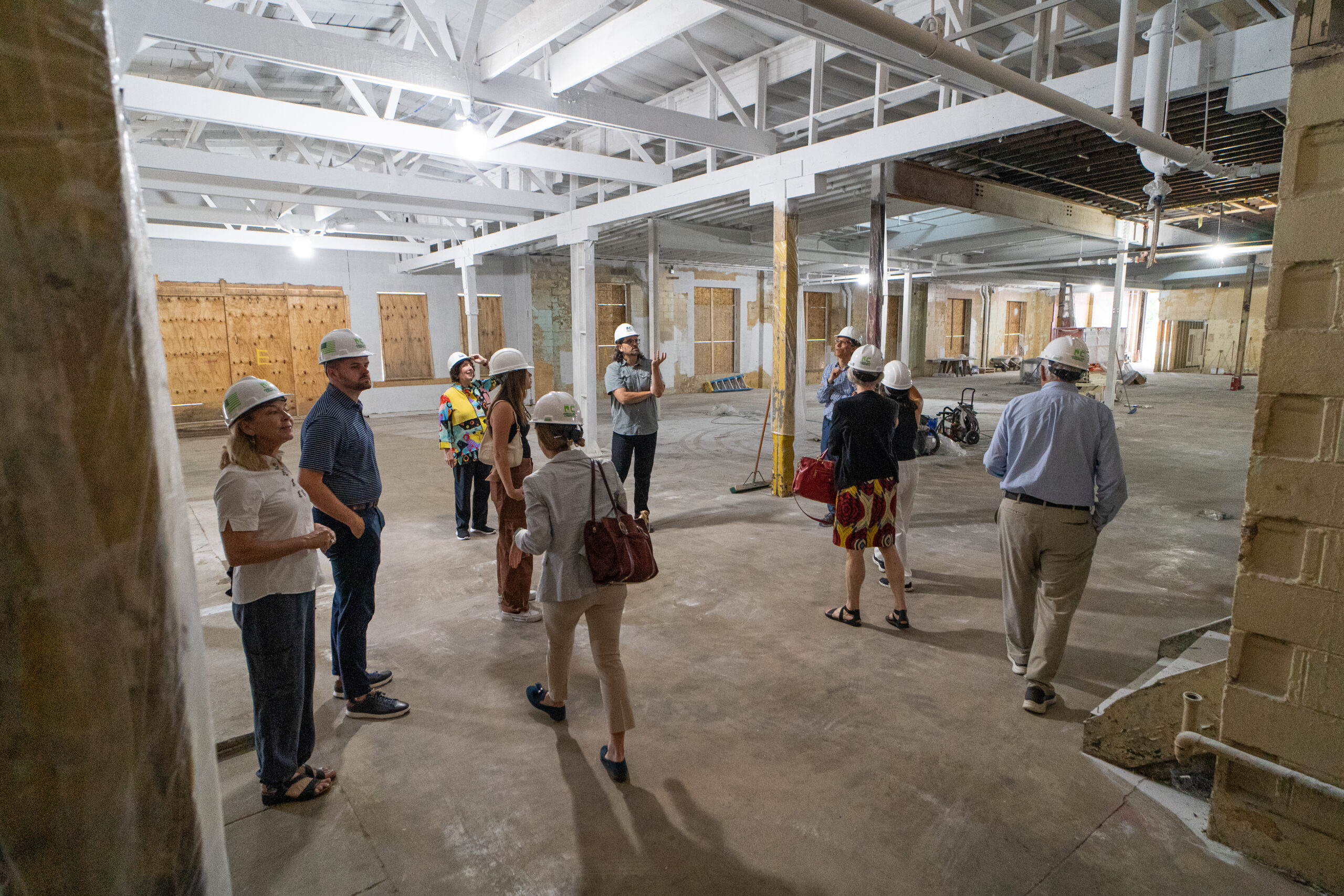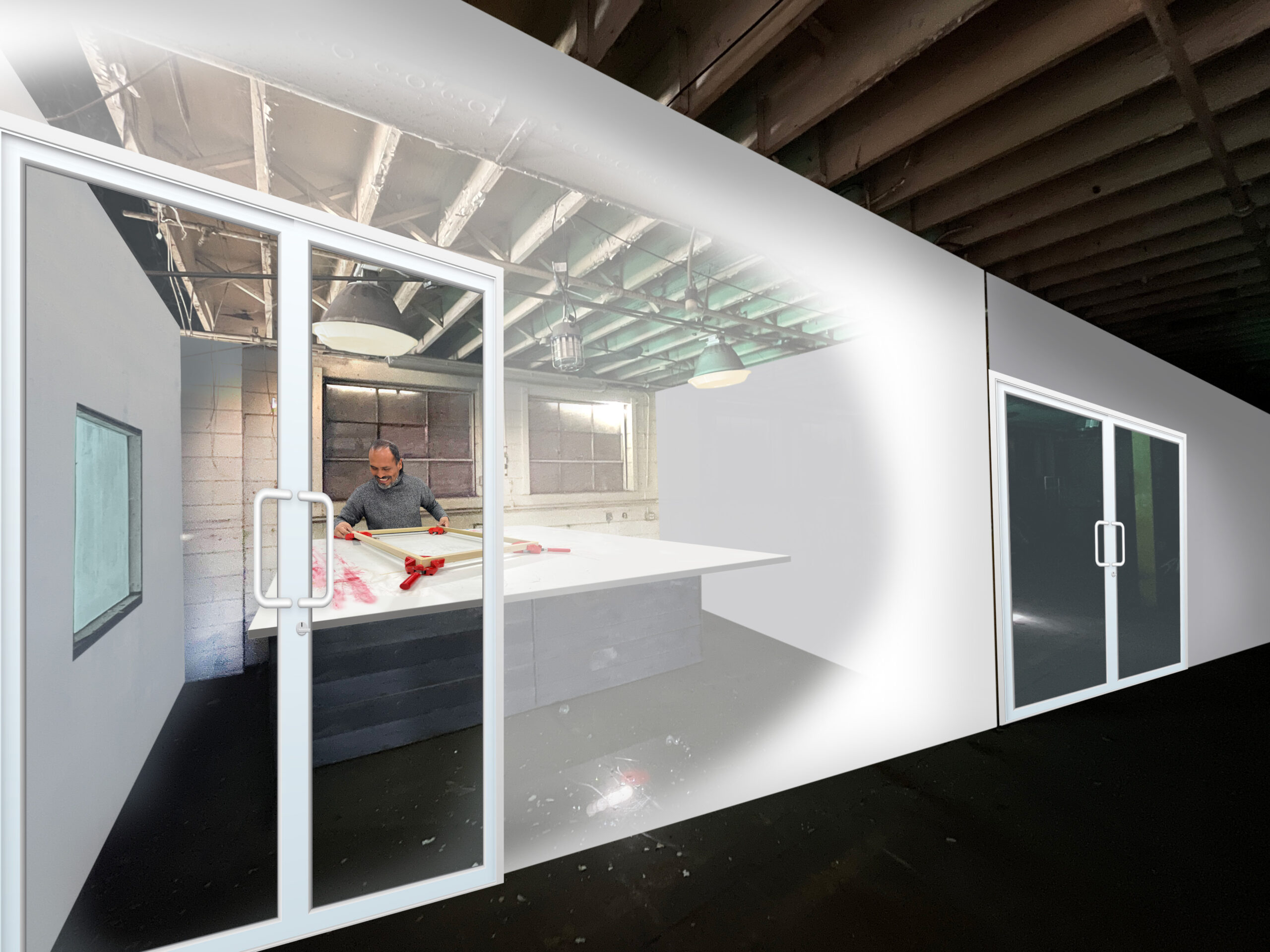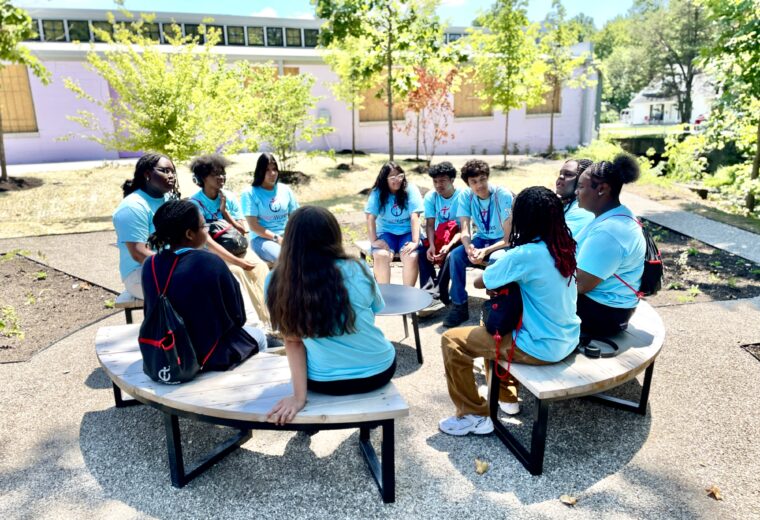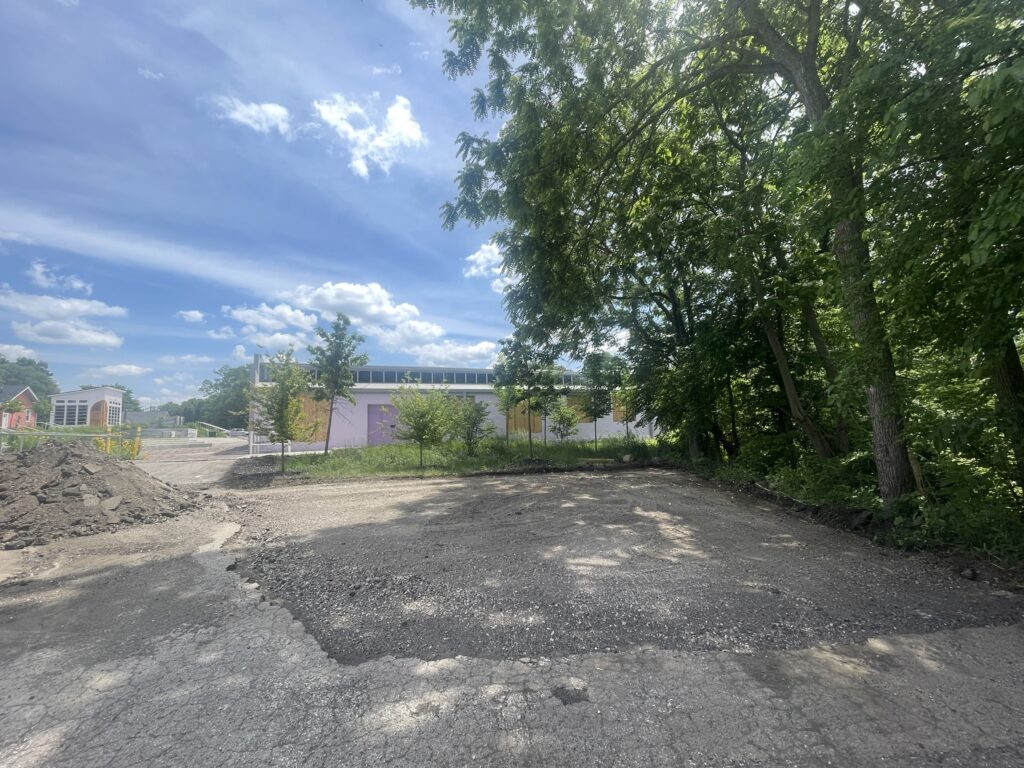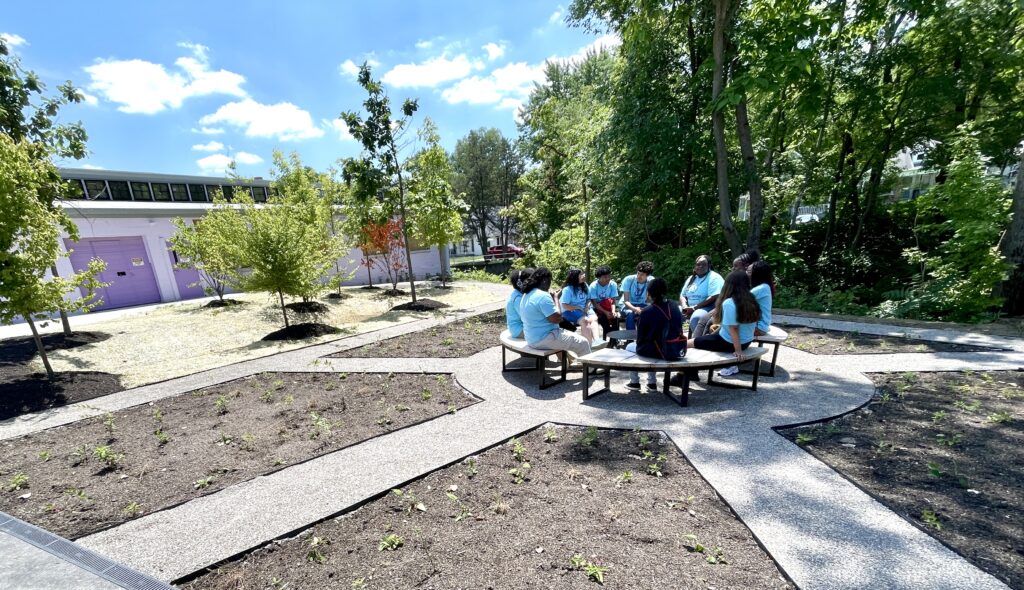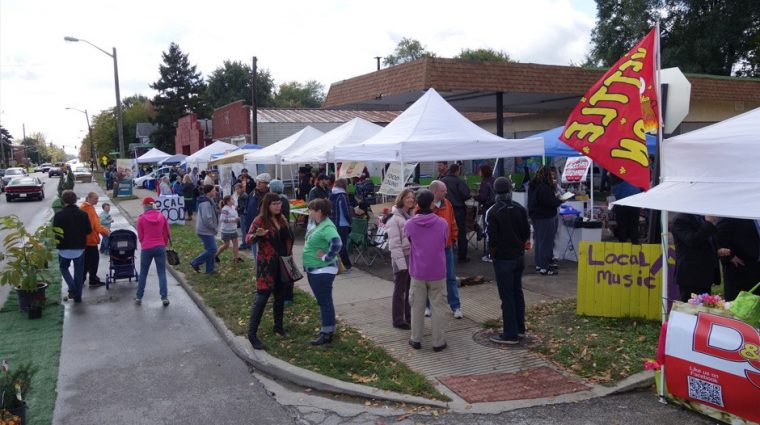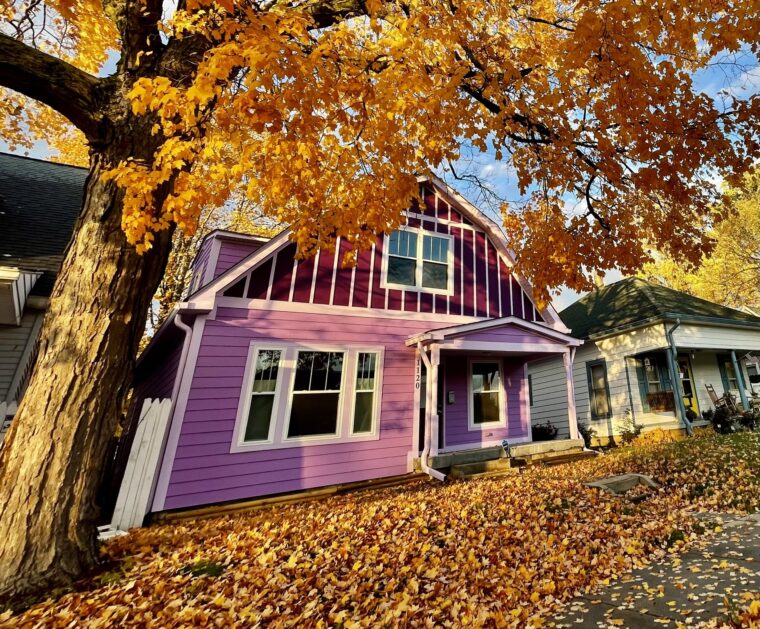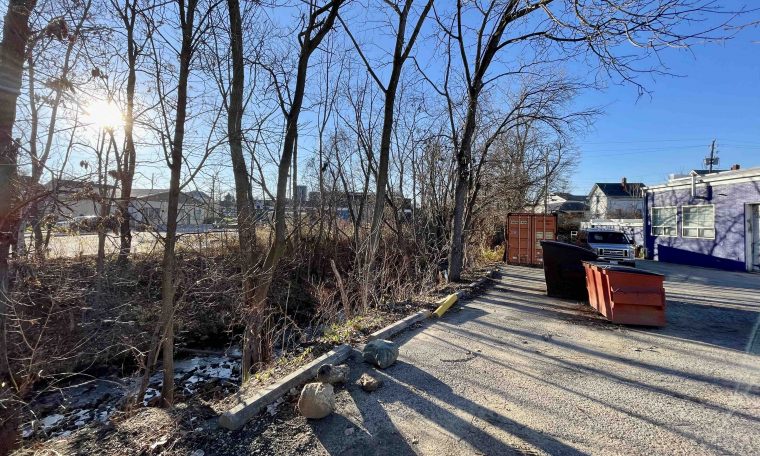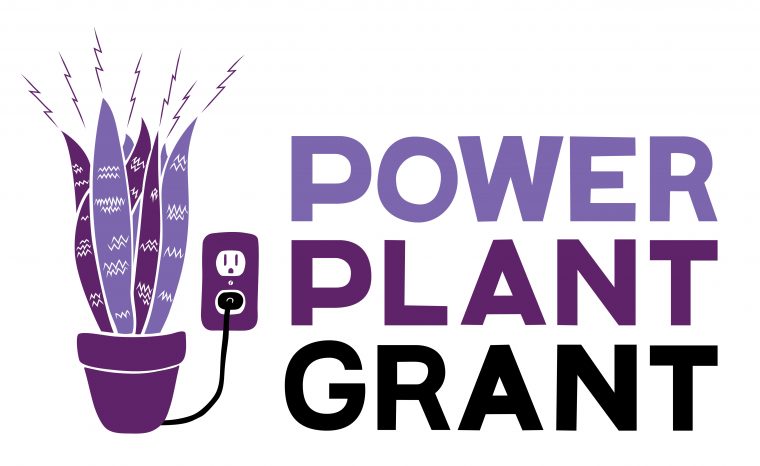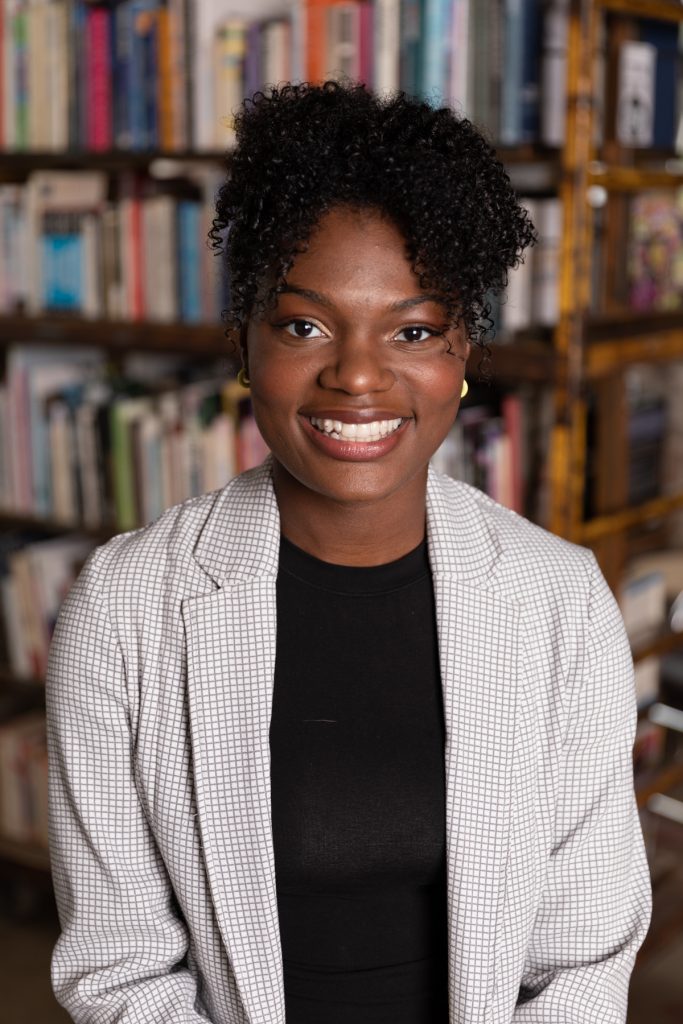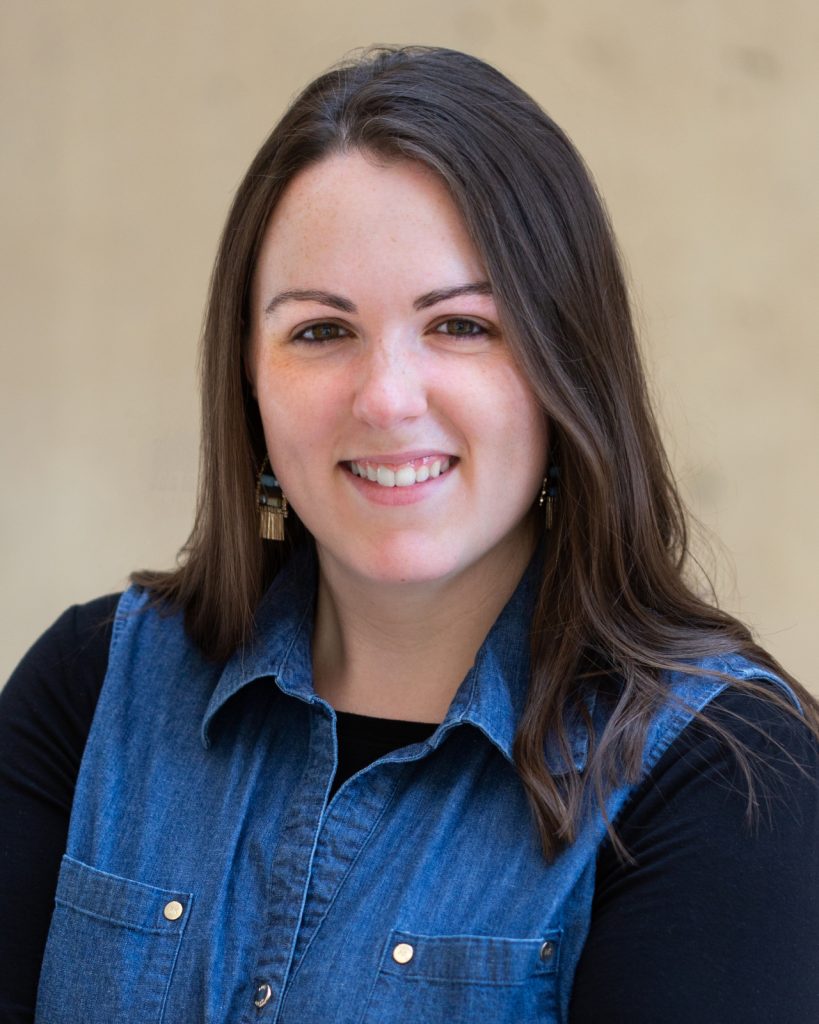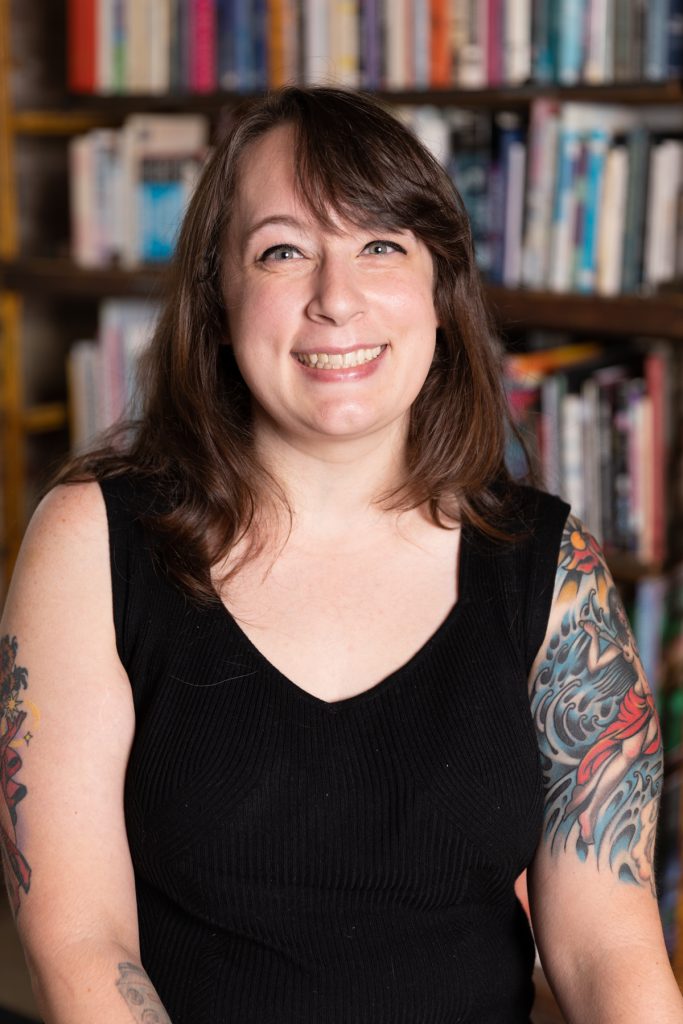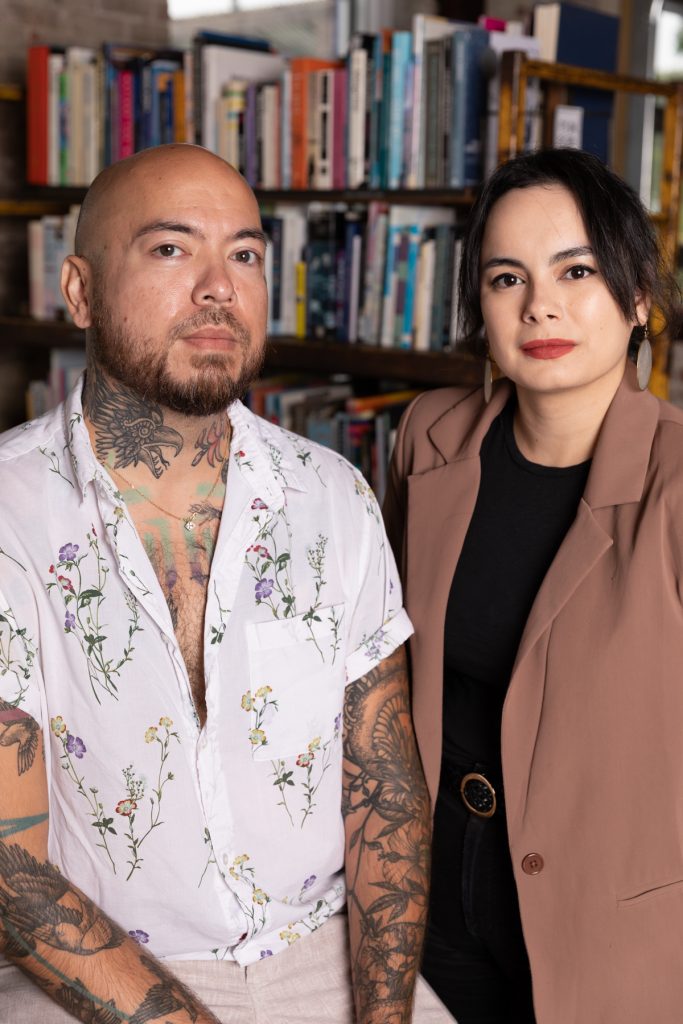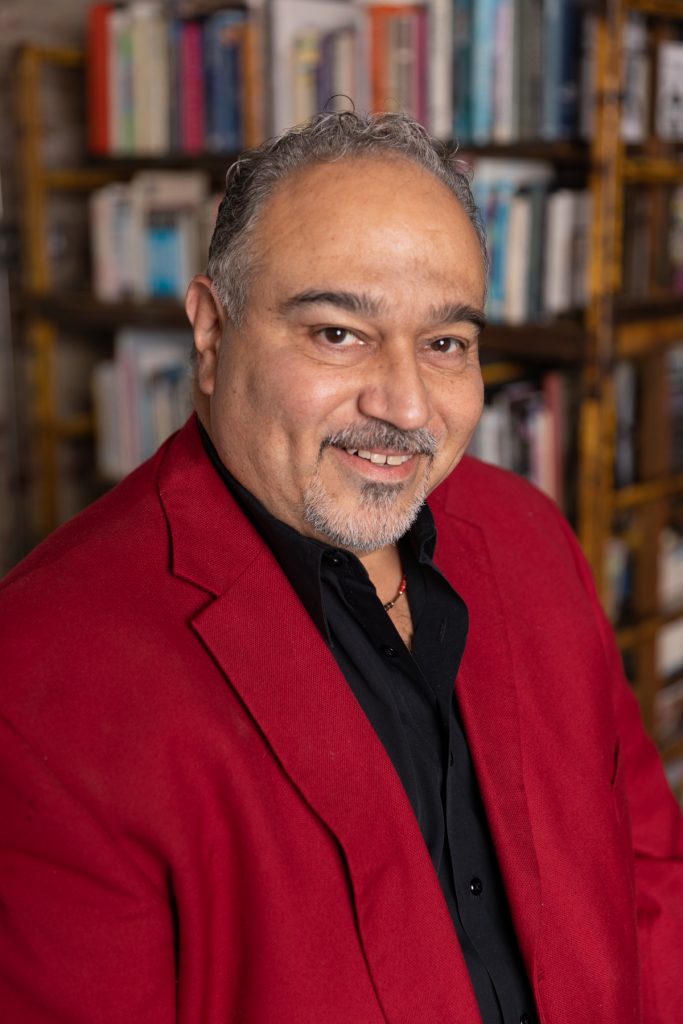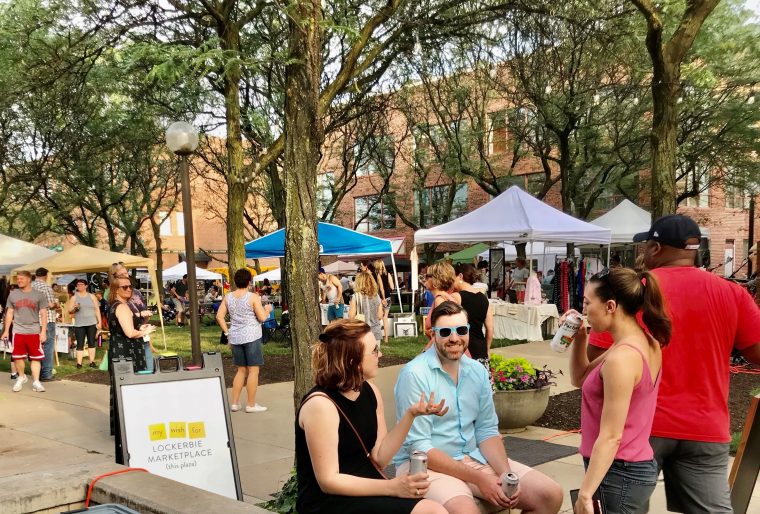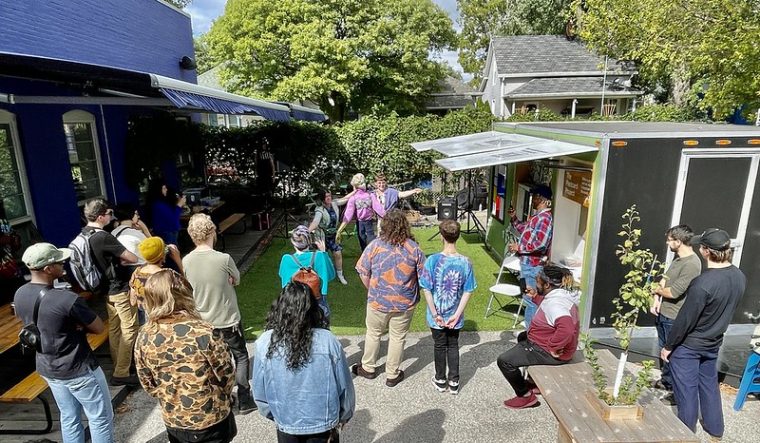While we’re always looking ahead and are very excited about what’s next, we know it’s important to stop and consider how we arrived here and what we’ve accomplished together. So we’re sharing Big Car Collaborative’s look back at highlights from 2024. This all often happened in partnership with others and was only possible for our nonprofit organization thanks to our generous funders and supporters. Of note, we’re highlighting a variety of things that shed light, also, on how we learn and share what we’ve learned.
Our approach is a cyclical one of innovating through trying testing ideas, learning from what works well and not as well, and adapting as we go forward. This is our approach to our ever-evolving and growing campus around Tube Factory in the Garfield Park neighborhood — including expansion into a 40,000-square-foot contemporary art museum space that opens in late 2025.
Likewise, this is how we continue to work with artists and the community in public art projects like our DigIndy partnership with Citizens Energy Group. And you can hear our growth over the air with our always-improving experimental art and community FM radio station, 99.1 WQRT.
Here are our 2024 highlights:
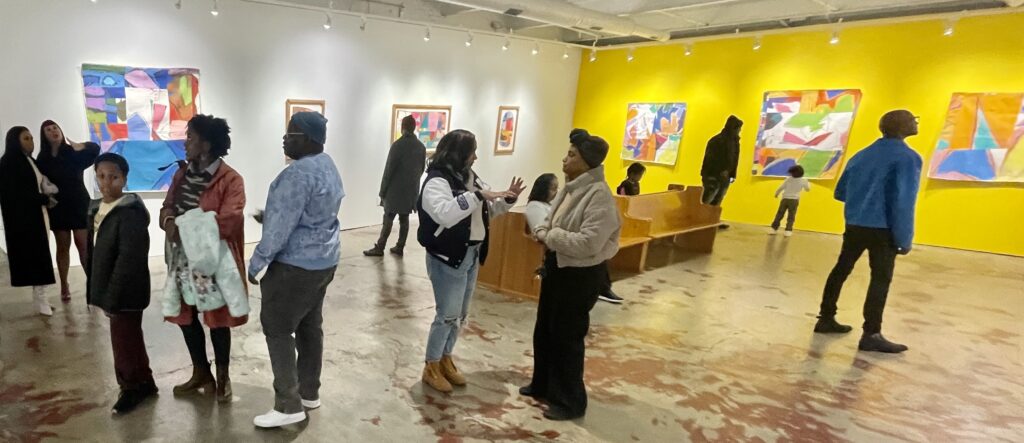
First Friday patrons view Julian Jamaal Jones’ “Take Me Back” exhibit at Tube Factory in the Main Gallery.
January
- Opened the exhibition, Take Me Back, by Indianapolis-based artist Julian Jamaal Jones in the upstairs gallery spaces at Tube Factory.
- As a new recipient of funding for live music from the Levitt Foundation, three Big Car staff members attended Levitt’s convening in Los Angeles where we connected with other organizations from across the country and picked up ideas and approaches for our concert series.
- While in Los Angeles, we visited museums linked to our plans for expansion on the Tube Factory campus — including MOCA Geffen, an early example of a former industrial building adapted into a contemporary art museum in 1983 with design by architect Frank Gehry. We were also able to experience Luna Luna, an artist-made amusement park brought back to life after being packed up for decades.
- Co-founder Jim Walker, and Lourenzo Giple — Big Car board president starting in 2025 — began co-teaching a class on art, placemaking, social justice, and society at Indiana University in Bloomington. Walker also began teaching his course, as he has for multiple years and is again in 2025, on public art in the MFA program at Herron School of Art in Indianapolis.
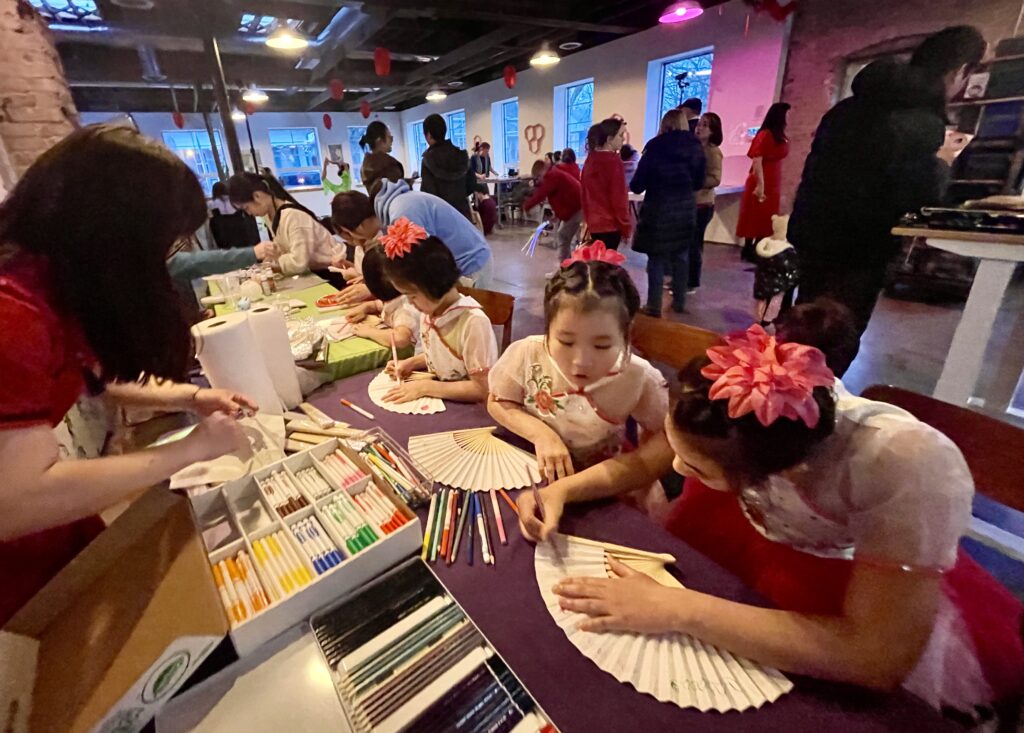
Youth patrons decorate fans at the 2024 Lunar New Year event at Tube Factory.
February
- Opened the exhibition, Hogar Dulce Hogar, by Indianapolis-based artist and musician Giselle Trujillo in the Efroymson Gallery in Tube Factory with a performance also on the First Friday in March of 2024.
- Co-founders Jim Walker and Shauta Marsh took a learning trip to Marfa, Texas — experiencing a few full days of touring spaces and learning more about the art and architectural work of Donald Judd who adapted much of a small town into a place for him and other artists to live, work, and show contemporary art.
- Hosted a successful Lunar New Year celebration with food, dance, fireworks, and socializing at Tube Factory artspace.
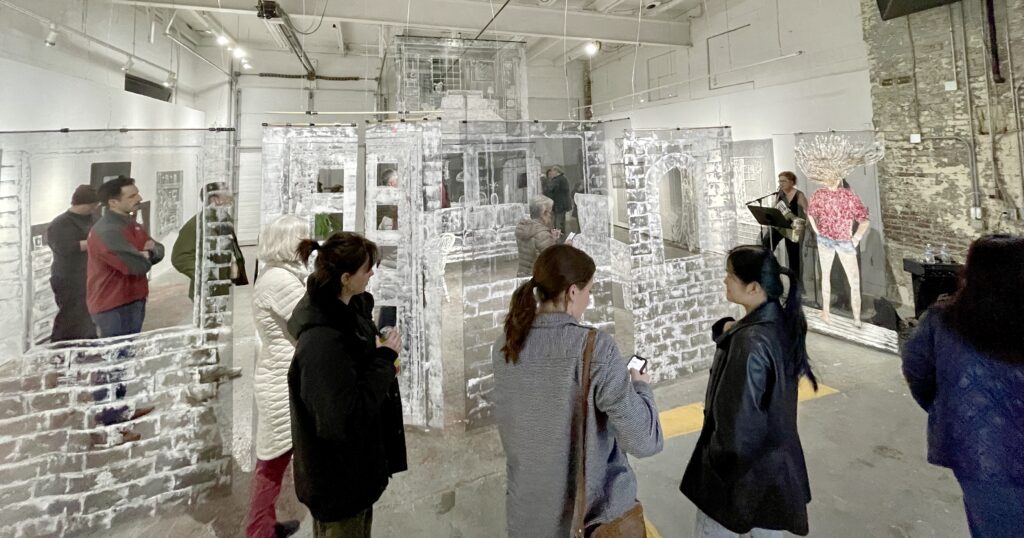
Visitors view Giselle Trujillo’s “Dulce Hogar Dulce” in the Efroymson Gallery at Tube Factory.
March
- Closed on New Market Tax Credits and got Phase 2 of our campus expansion — the 40,000-square-foot contemporary art museum — under contract with Jungclaus Campbell.
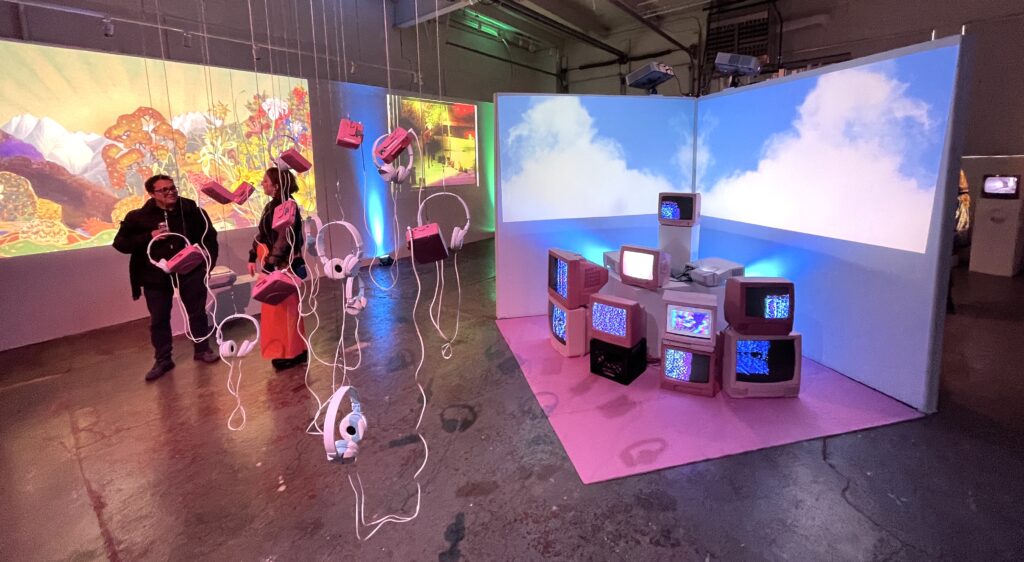
Jessica Dunn talks with a guest while standing in the middle of her exhibit “Particular Fragments” in Tube Factory’s Efroymson Gallery.
April
- Opened Rachel Leah Cohn’s exhibition, Mem, in the upstairs gallery spaces at Tube Factory where it stayed up until July. Cohn, who has shown around the world, is based in Indianapolis.
- Opened the multimedia Particular Fragments exhibition by Indianapolis-based artist Jessica Dunn in Efroymson Gallery.
- Hosted a solar eclipse event in Tube Factory at our outdoor area featuring a live performance by Dunn and M. Moskaliuk and a soundtrack show by Walker broadcasted at the time of the eclipse on WQRT FM.
- Four staff members attended the Expo Chicago art fair, staying up to date on trends in the contemporary art realm and attending panel discussions and visiting art spaces in Chicago.
- Five staff members and artists from our collective and long-term residency program took a weekend trip to visit artist-run spaces and art museums in Cincinnati as part of our partnership with other artist-run organizations in the midwest.
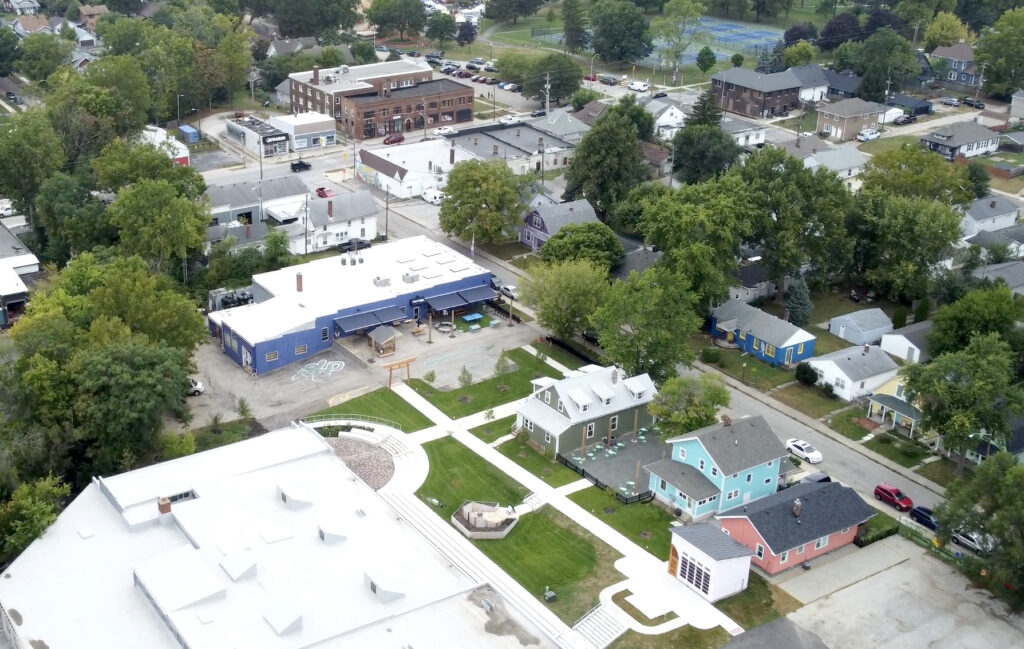
An overhead drone shot of the Tube Factory campus in May 2024.
May
- Hosted the Region Ninety group exhibition in Guichelaar Gallery, a house gallery on our campus curated and managed by artists in our long-term residency program. The Region 90 show featured 23 artists from Ohio, Indiana, and Kentucky addressing censorship.
- Marsh and Walker visited art museums on the east coast as part of their ongoing research — most notably the Peabody Essex Museum in Salem, Massachusetts.
- Hosted the Learning Tree’s national Common Ground Gathering opening event with keynote speaker Mindy Fullilove.
- Marsh and Walker presented about Big Car’s work and attended the Congress for New Urbanism conference on the theme of Restorative Urbanism in Cincinnati.
- Welcomed our latest artists in the long-term residency program as we finished renovations on our 18th affordable home for artists on the Tube Factory block with our lovely Terri Sisson Park in its center.
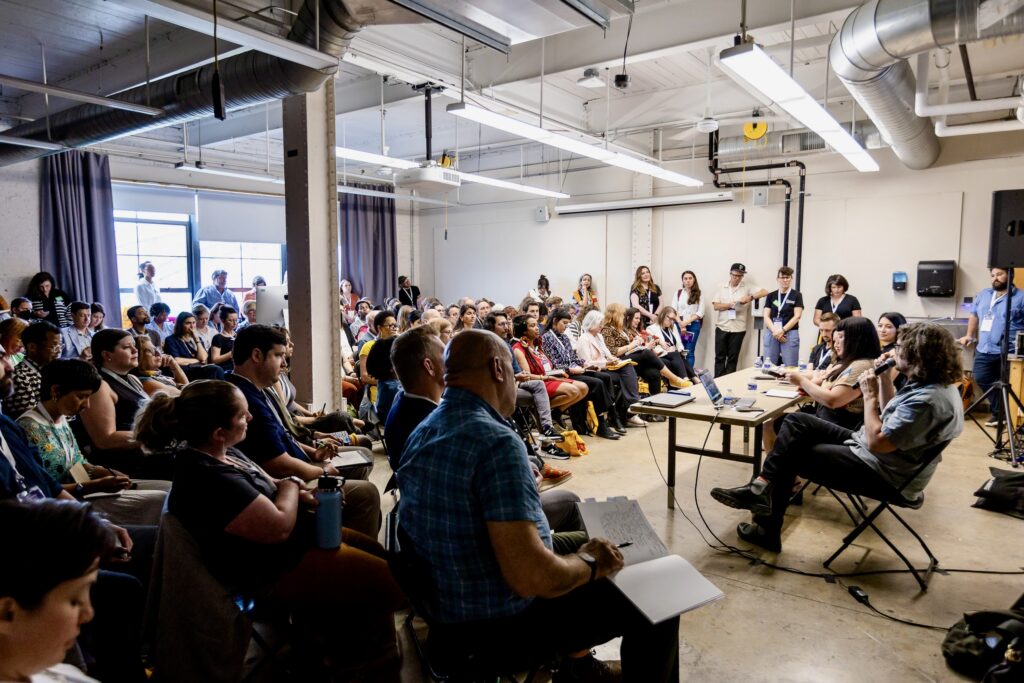
Jim Walker, Shauta Marsh, and other SPARK partners speak at Placemaking Week by Project for Public Spaces in Baltimore.
June
- Opened SPARK on the Circle for 2024 — our fourth year of activating Monument Circle with human-scale cultural programs in partnership with the City of Indianapolis, Downtown Indy, and others (2015, 2022, 2023, 2024).
- Marsh, Walker and SPARK partners presented at Placemaking Week by Project for Public Spaces in Baltimore and attended this conference and visited art spaces and public places across the city.
- Hosted the A Portrait of Motherhood photography exhibit by Kelley Jordan Schuyler, an artist based in our Garfield Park neighborhood — in Tube Factory’s Efroymson Gallery.
- Celebrated the start of work on the contemporary art museum expansion on the Tube Factory block with a groundbreaking event with Indianapolis Mayor Joe Hogsett and many of our funders, supporters, and partners.
- Brought New-York based poet Ariana Reines to Tube Factory artspace for a reading event and to create a commissioned poem for the Chicken Chapel of Love.
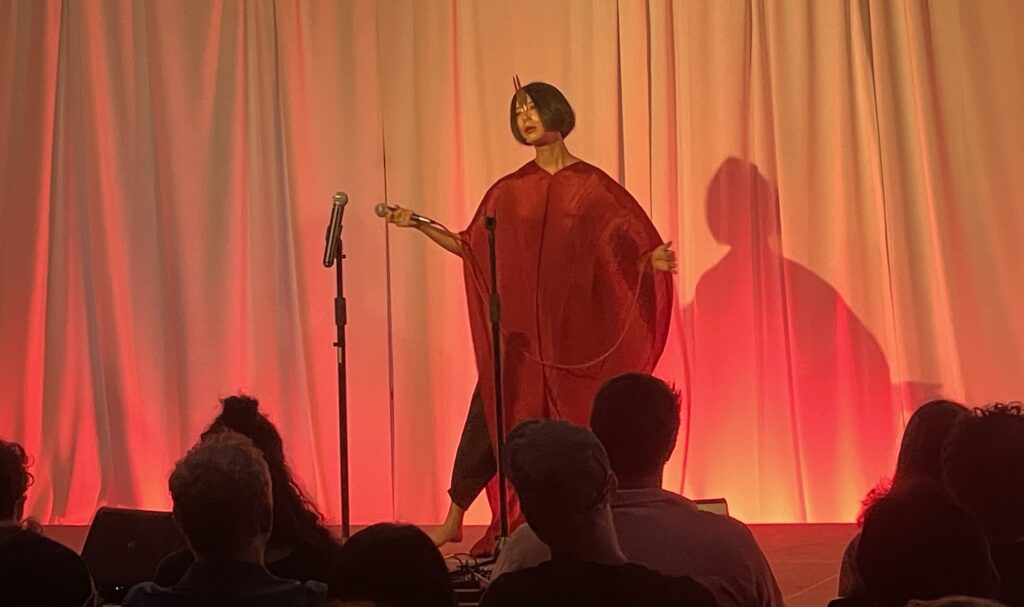
Japanese experimental vocalist Hatis Noit performs at Tube Factory.
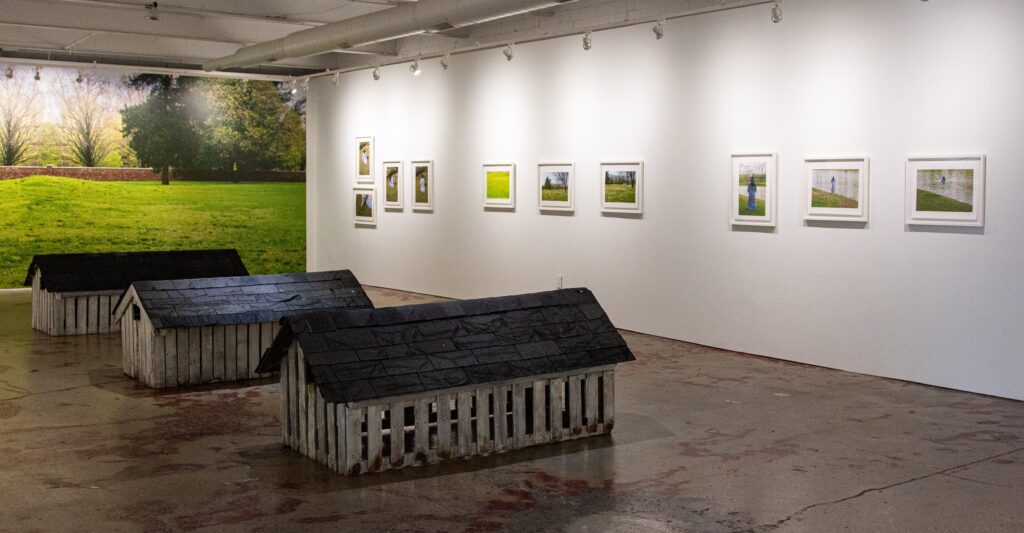
A shot from the Main Gallery portion of Elisa Harkin’s “Ekvnv (Land), the Sacred Mother from Which We Came.”
July
- Opened the NEA-supported Elisa Harkins exhibition, Ekvnv (Land), the Sacred Mother from Which We Came, in all three galleries in Tube Factory.
- Hosted a sold-out concert by Japanese experimental vocalist Hatis Noit at Tube Factory as part of her American tour that included MassMoCA and the Andy Warhol Museum.
- Walker presented — along with the Indiana Communities Institute at Ball State — about arts-focused placemaking and community development to Hancock County, Indiana leaders.
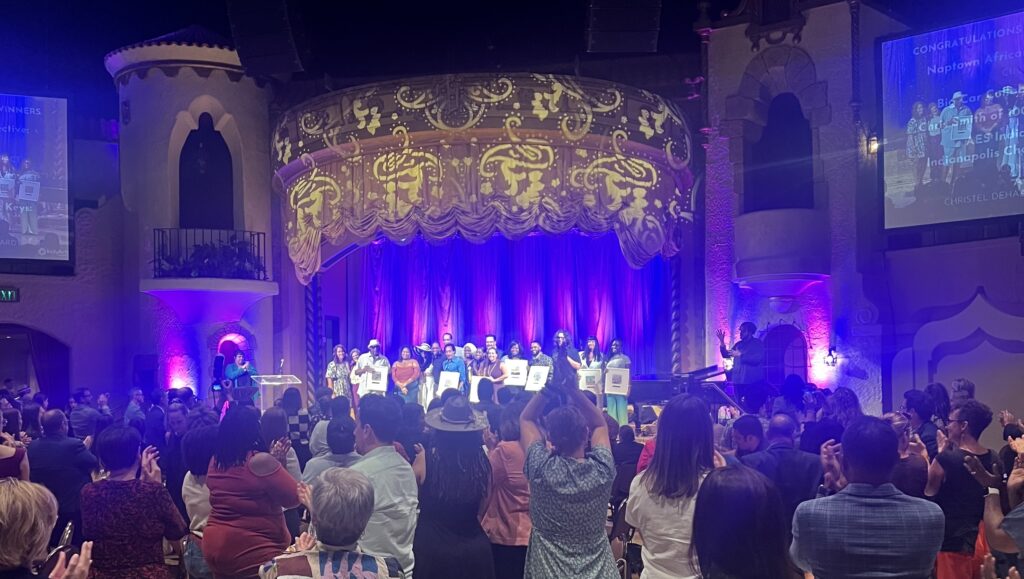
Jim Walker and Shauta Marsh (second and third from last) pose with Big Car’s ARTI Award for Neighborhood Impact at the Indy Art Council’s annual Start with Art event.
August
- Received an ARTI Award for Neighborhood Impact from the Arts Council of Indianapolis at Start with Art.
- Walker led a conversation about art and baseball with visual artists and former Major League Baseball player Micah Johnson at GANGGANG’s Butter Art Fair in Indianapolis.
- Opened the Sound Field visual and audio exhibition in Guichelaar Gallery by two of our long-term resident artists, Rob Funkhouser and Justin Cooper, in collaboration with Landon Caldwell, a Big Car staff member.
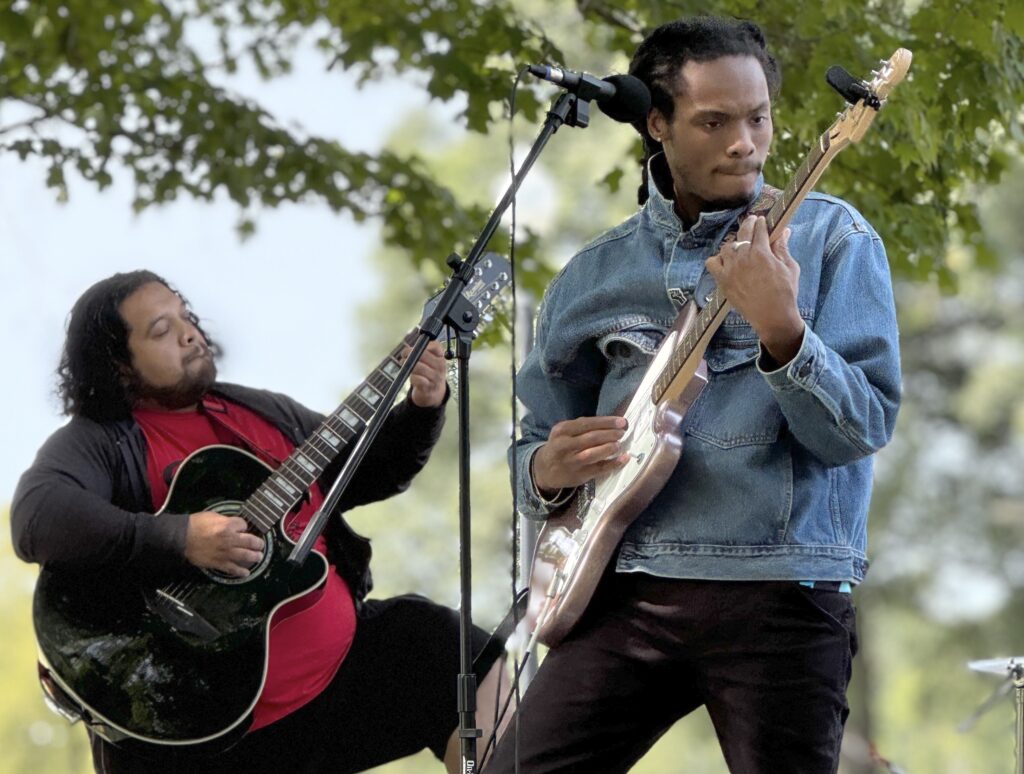
Members of “Forgotten Tribe” perform at a concert in the 2024 Levitt VIBE Indianapolis Music Series in Garfield Park.
September
- Kicked off the seven-week Levitt VIBE Indianapolis concert series located, in 2024, in Garfield Park.
- Walker and Marsh continued their research by visiting multiple historic and contemporary utopian communities, and important cultural and architectural locations.
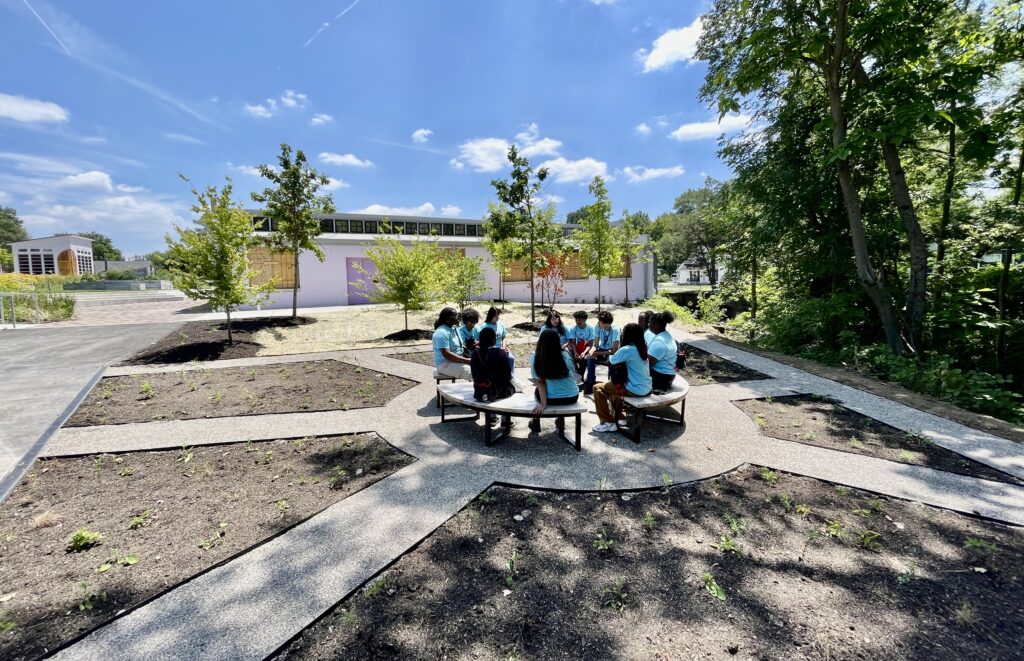
Teens in the 2024 TeenWorks Summer Program sit on the benches at the Bean Creek Outlook.
October
- Celebrated the opening of the Bean Creek Outlook — a new gathering space to appreciate art and nature along Bean Creek on the Tube Factory campus primarily built over the summer with TeenWorks youth.
- Received awards for SPARK on the Circle from Indy Chamber and Accelerate Indiana Municipalities (AIM).
- Walker led a workshop for communities on placemaking and socially engaged art for the Indiana University Center for Rural Engagement.
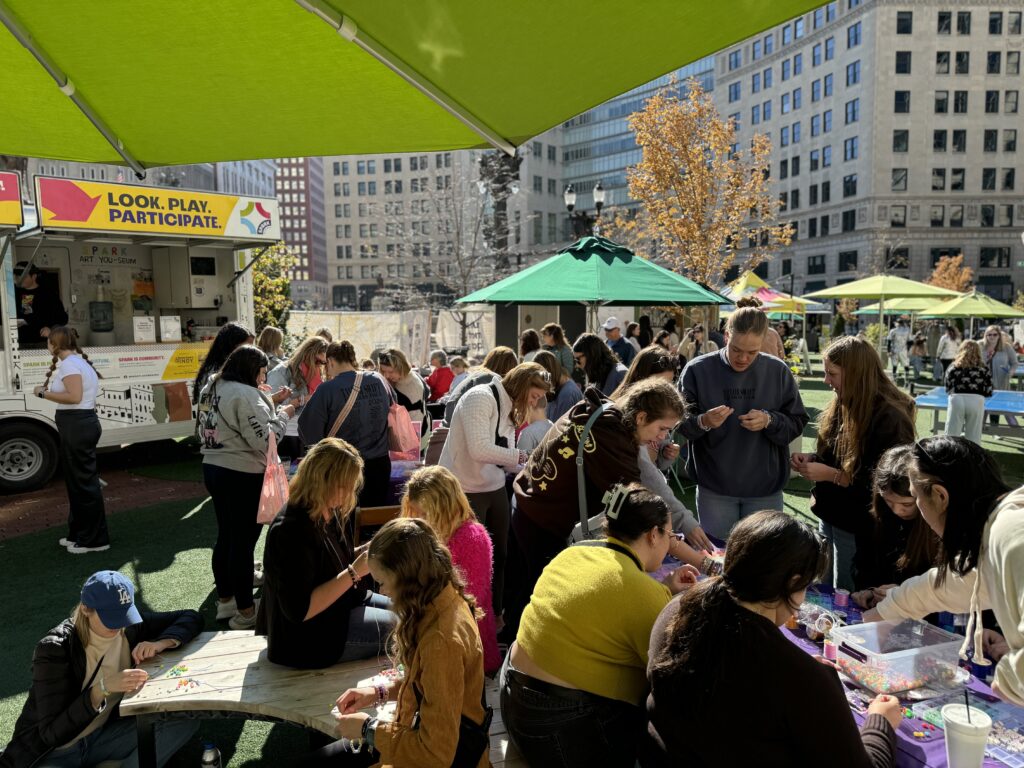
A shot of a busy day at SPARK during the Taylor Swift weekend at SPARK on the Circle.
November
- Hosted more than 10,000 Taylor Swift fans and other visitors over a busy weekend full of music and artmaking at SPARK Monument Circle.
- Opened Reflejos Grabados, a solo exhibition in Efroymson Gallery by Alejandra Carrillo, an artist in our long-term residency program.
- Opened New! and Impervious to Natural Elements, a solo exhibition in Guichelaar Gallery by Christen Baker, an artist in our long-term residency program.
- Our co-founders visited Frank Lloyd Wright’s Taliesin home and studio in Wisconsin.
- Opened Julie Xiao’s A Journey exhibition in Tube Factory and celebrated her new Fire Mother mural on the Chicken Chapel of Love.
- Hosted a multi-day gathering of midwestern organizations who are, like Big Car, part of the Andy Warhol Foundation for the Visual Arts’ Regional Regranting Program.
- Awarded six $10,000 grants to Indianapolis-based artists through our Power Plant Grants program funded by the Andy Warhol Foundation.
- Walker presented on the topic The Future of Design Process as part of a panel in The American Institute of Architects Regional and Urban Design Conference in Indianapolis.
- Six staff members and artists from our collective and residency program presented in and attended the MDW Summit of midwestern artist-run spaces in Kansas City.
- Walker led a workshop on arts-focused public space activation as part of the Project for Public Spaces Making it Happen series.
- Marsh participated in a curatorial workshop on art and censorship in New York City. And Marsh and Walker visited galleries and adaptive reuse spaces — including Judd’s preserved former home and studio, 101 Spring Street.
- Began a curatorial exchange partnership with The FRONT, an artist-run space in New Orleans. Marsh selected Indianapolis based artists Bryn Jackson and Nasreen Khan to exhibit. We’ll host a show in return at Tube Factory in 2025. This enables Indianapolis artists access to exhibit work out of state, engaging a new audience.
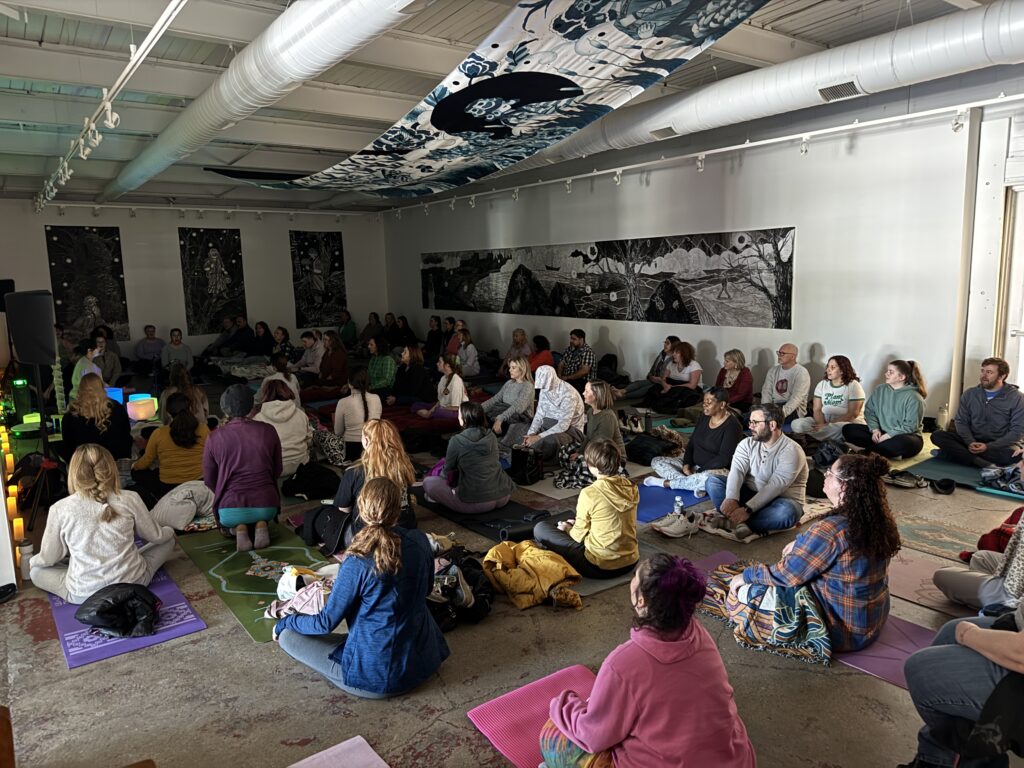
Guests fill the Main Gallery during a sound healing event in coordination with Julie Xiao’s exhibit “A Journey.”
December
- Walker continued research travel to cultural, arts, utopian, and organic architecture spaces in Phoenix including Taliesin West, the Japanese Friendship Garden, and the Heard Museum.
- Installed a new abstract mural called Waiting for the Light to Tell Them What to Be by Walker in the windows of the Listen Hear space on Shelby Street.
- Kicked off our Big Table matching campaign with IHCDA and Patronicty for the culinary arts program and spaces in the expanded contemporary art building currently under renovation and set to open in 2025. We met our goal in early February of 2025.
- Began self-reflection and restorative events in the Tube Factory main gallery linked with Julie Xiao’s exhibition. Happening weekly through mid February of 2025, these included sound healing, yoga, and restorative story time.

